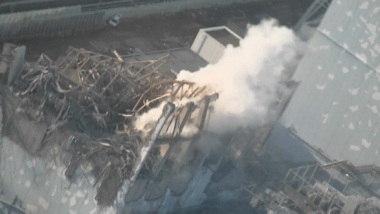As it continues to study the details of the complex accident at Fukushima Daiichi, Tokyo Electric Power Company is sharing information with other nuclear power plant operators.
As the owner and operator of Fukushima Daiichi, Tepco is committed to maintaining safety at the accident site and cleaning it up. It has been running an investigation into some 52 "unconfirmed or unclear matters" relating to the accident sequence, and on 6 August it released its second report.
In one of its findings Tepco outlined what it thought was the reason why an automatic safety system switched off, saying this would cause it to develop new operational procedures that could increase safety at other power plants.
Safer safety systems
One safety feature of many boiling water reactor designs is the Reactor Core Isolation Cooling (RCIC) system, which can exploit the temperature and pressure difference between the reactor vessel and the suppression chamber to spin a small turbine, generate electricity and drive a pump that injects cooling water into the reactor vessel.
At Fukushima Daiichi 3 this system switched off unexpectedly after around 19 hours of operation. Tepco investigated eight potential technical reasons for this, as well as the possibility that an operator manually switched it off. In the end the most likely cause, said Tepco, was that the exhaust pressure from the RCIC turbine reached a set limit that triggered it to stop.
 |
| Could Fukushima Daiichi 3's safety systems have lasted a little longer? (Image: Tepco) |
A further water injection system then automatically took over and operated for another 21 hours before the accident progressed to core damage. Longer operation of the RCIC could not have prevented the core melt and subsequent radioactive releases, but even a few more hours operation would have been helpful to the engineers tackling the emergency as well as local officials planning public safety response.
The RCIC system functioned as it was designed, noted Tepco, but while protections like its limit on turbine exhaust pressure are important in their own right, the safety priority in an accident situation should be to continue core cooling as long as possible. It is thought that damage to the RCIC would not occur immediately on high exhaust pressure and would be outweighed by the importance of running the system as long as possible.
Tepco said it will develop a procedure for reactor operators to manually lift the limit on turbine exhaust pressure in an emergency and thereby get maximum performance from the RCIC. It said this would be "reflected onto safety measures" at its Kashiwazaki Kariwa nuclear power plant, which it hopes to restart under the new Japanese safety regime.
"I am pleased that TEPCO is continuing the investigation and study of what exactly happened regarding the Fukushima nuclear accident," said Dale Klein, a former chairman of the US Nuclear Regulatory Commission and currently the chair of the Reform Monitoring Committee that oversees the necessary changes in Tepco's safety culture. He said, "I hope that Tepco will continue to make efforts to share these findings with the world... This information will assist in making nuclear plants more safe."
Sharing safety-related operating experience has been common in the nuclear industry since the creation of the Institute of Nuclear Power Operations (INPO) in the USA as a response to the accident at Three Mile Island. After the Chernobyl accident came a global equivalent, the World Association of Nuclear Operators (WANO). The two organisations make up a global network of nuclear power plant operators with the major function of peer-reviewing each others practices during normal operation to share insight into nuclear safety. They also share reports on operating experience as new information arises.
Researched and written
by World Nuclear News




_47120.jpg)

_23621.jpg)






